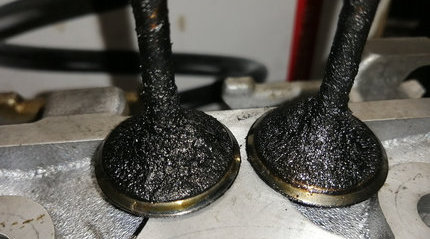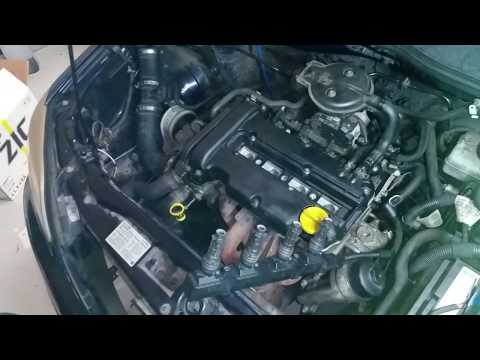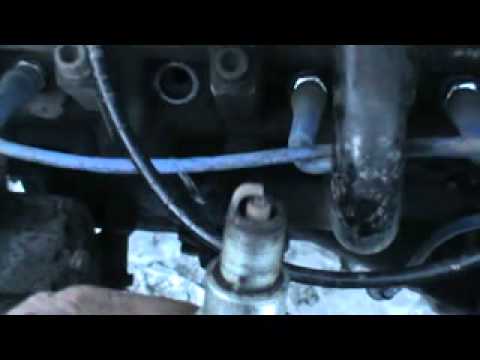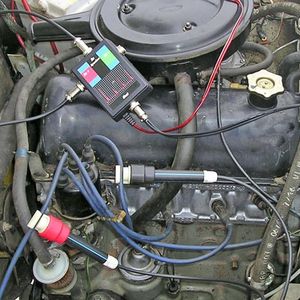
How to check valves without removing the cylinder head
Content
- When is it necessary to check the valves without disassembling the internal combustion engine
- How to check valves without removing the cylinder head
- How to check the correctness of the valve clearance adjustment
- How to check the geometry of the valves: bent or not
- How to check if the valves are burnt out or not without removing the cylinder head
- Checking the combustion chamber for leaks with a pneumatic tester or compressor
The destruction of the valve plates or their loose fit to the seats due to soot, incorrect adjustment and skew leads to a drop in compression and a deterioration in the operation of the internal combustion engine up to its complete failure. Similar problems appear in the event of a burn-out of the piston or piston rings, the formation of cracks in the cylinder block or the breakdown of the gasket between it and the head. To carry out an accurate troubleshooting, it is necessary to disassemble the motor, but there are ways to check the valves without removing the cylinder head.
In this article, we will tell you how to check the tightness of the valves without removing the cylinder head, as well as simple ways to independently detect burnout and incorrect adjustment without disassembling the motor and using expensive equipment.
When is it necessary to check the valves without disassembling the internal combustion engine
The question "how to check the condition of the valves without disassembling the internal combustion engine?" relevant when the following symptoms appear:

How to check for compression using the old-fashioned method: video
- uneven operation of the internal combustion engine ("triple");
- a noticeable decrease in engine power;
- drop in throttle response and acceleration dynamics;
- strong pops ("shots") in the intake and exhaust tract;
- significant increase in fuel consumption.
Some of the above problems are observed with malfunctions that are not related to a violation of the tightness of the combustion chamber, therefore before checking the serviceability of the valves, you should measure the compression.
If the compression is normal, this means that the combustion chamber is tight and the valves need not be checked., and the problem should be sought in the ignition and power supply system of the internal combustion engine. More information about the possible causes, as well as how to identify a problematic cylinder, is described in the article "Why the internal combustion engine troit at idle."
How to check valves without removing the cylinder head
Methods for checking valves without removing the cylinder head are selected depending on the symptoms and suspected causes of the malfunction, as well as the tool available. The most common are the following methods:

The main signs of valve burnout: video
- checking the condition of the candles;
- inspection of valves and cylinders using an endoscope;
- detection of back draft in the exhaust system;
- method by contradiction - according to the condition of the pistons and compression rings;
- diagnostics of the tightness of the combustion chamber;
- measurement of gaps to assess the correctness of their adjustment;
- checking the geometry by rotating the crankshaft.
How to check the correctness of the valve clearance adjustment
The problem “how to check if the valves are stuck?” relevant for cars with internal combustion engines, in which the value of the thermal clearances of the valves is set using special screws or washers. They need to be checked every 30–000 km (the exact frequency depends on the ICE model) and adjusted if necessary. Checking is carried out using a set of probes with a pitch of 80 mm or a bar with a micrometer.
Checking valve clearances with feeler gauges
To perform the procedure, you need to cool the engine to the recommended temperature (usually about 20 ° C), remove the valve cover, and then use a measuring tool to check the compliance of the gaps with the tolerances at the control points, sequentially for each valve. The features of the process and the size of the recommended gaps depend on the modification of the internal combustion engine and may vary even on the same model.
In addition to the periodicity of the run and the reduction in compression, a sign of the need to check the gaps is the characteristic ringing of the timing “on the cold”, which disappears when warmed up. The operation of the internal combustion engine with incorrectly set clearances leads to overheating of the valves and their burnout.
How to check the geometry of the valves: bent or not
the basic reason for the violation of the geometry of the valves, when the rods warp relative to the plates, is their contact with the pistons as a result of a broken timing belt.
Violation of valve geometry
Such consequences are not typical for all models and directly depend on the design features of the internal combustion engine. For example, for engines installed on Kalina and Grants with index 11183, this problem is not relevant, but for later modifications of the same models with ICE 11186, the meeting of valves and pistons when the belt breaks is almost inevitable.
If the machine is at risk after replacing the belt, before starting the internal combustion engine, it is imperative to check if the valves are bent. Without disassembly, this is easiest to do by turning the crankshaft manually using a wrench worn on the pulley mounting bolt. Free rotation indicates that the valves are most likely normal, tangible resistance indicates that their geometry is broken. However, if the defect is minor, it is not always possible to determine it by this method. A more reliable way is to evaluate the tightness of the combustion chamber using a pneumatic tester or compressor, described below.
How to check if the valves are burnt out or not without removing the cylinder head
With a drop in compression in one or more cylinders, you should think about how to check the health of the valves - burned out or not. You can read about why the valves burn out here. A similar picture may be due to burnout of the piston or compression rings, breakdown of the cylinder head gasket, cracks in the cylinder block as a result of an accident, etc. An in-place check of the valve mechanism allows you to establish the specific cause of the loss of compression. This check can be done in four ways, described below.
Checking the valves without removing the cylinder head is carried out first of all to confirm or exclude their damage. Some methods may indicate other reasons for the reduction in compression. At the same time, it should be borne in mind that in-place diagnostics of the valve mechanism may not allow detecting minor defects in the cylinder-piston and valve groups at an early stage.
Checking valves without disassembling the internal combustion engine according to the condition of the candles
Spark plug covered with oily soot - a clear sign of piston damage
The essence of the method is to visually inspect the spark plug removed from the cylinder with low compression. The electrodes and the threaded part are dry - the valve has burned outif they are oily or covered with dark oily soot, the piston is damaged or the compression or oil scraper rings are worn out. The inside of the candle may be in oil due to damage to the valve seals, however, in this case, all candles will be contaminated, and not just the one in the problem cylinder. The diagnosis of DVS by the color of soot on candles is described in detail in a separate article.
How to check the condition of the valves with a banknote or paper

How to check burnt valves with paper: video
Easy and quickly check the condition of the valves, provided that the power supply and ignition system are working, a banknote or a small sheet of thick paper will help, which should be kept at a distance of 3-5 cm from the exhaust pipe outlet. The internal combustion engine must be warmed up and started.
In a serviceable car, the paper sheet will constantly vibrate evenly, periodically moving away from the exhaust under the action of the outgoing exhaust gases and again returning to its original position. If the sheet periodically sucks into the exhaust pipe, it probably burned out or misses one of the valves. About what the traces on a sheet of paper indicate or their absence during such a check, the article tells about checking a car when buying it from hand.
Express check with engine oil and dipstick
This method of checking valves without removing the cylinder head is based on eliminating problems with the piston group. Piston burnout can be detected by contact using a feeler gauge inserted into the cylinder through the spark plug hole. Ring or wall problems are eliminated by pouring low compression oil into the cylinder through the same hole, reinstalling the spark plug, and starting the engine. If after that the pressure rises, the problem is not in the valves.: the filled oil fills the gap between the piston and the cylinder walls, through which the gases escaped.
Checking valves without removing the head using an endoscope
Checking valves and cylinders with an endoscope
The endoscope allows you to diagnose valves and cylinders without disassembling the motor using a visual inspection. in order to inspect the valves, you will need a device with a flexible head or a nozzle with a mirror.
The advantage of the method is the ability not only to confirm the presence of a specific defect, but also to determine which valve is burned out - inlet or outlet. Even an inexpensive endoscope costing from 500 rubles is enough for this. Approximately the same is the cost of inspecting the cylinders with a professional device at the service station.
Checking the combustion chamber for leaks with a pneumatic tester or compressor
One of the basic functions of the valves is to ensure the tightness of the combustion chamber on the compression stroke to create the necessary pressure for the ignition and combustion of the air-fuel mixture.

Checking the internal combustion engine with a pneumatic tester: video
If they are damaged, gases and the fuel mixture break into the intake or exhaust manifold, as a result, the necessary force is not created to move the piston and the normal operation of the internal combustion engine is disrupted.
The pneumotester allows to reliably establish the presence and cause of depressurization. The cost of such a device is from 5 rubles, but instead you can use a conventional machine compressor for inflating tires with a pressure gauge. An alternative option is diagnostics at the service station, for which they will ask from 000 rubles.
How to check the condition of the valves without removing the cylinder head using a compressor or pneumatic tester:
- Make sure valve clearances are within specification.
- Move the piston of the cylinder under test to top dead center on the compression stroke by rotating the crankshaft or drive wheel in the gear closest to straight (usually 5th).In models with a carburetor ICE, for example, VAZ 2101-21099, the position of the slider contact in the ignition distributor (distributor) will help determine the compression stroke - it will point to the high-voltage wire leading to the corresponding cylinder.
- Attach a compressor or pneumotester to the spark plug hole, ensuring the tightness of the connection.
- Create a pressure of at least 3 atmospheres in the cylinder.
- Follow the readings on the manometer.
Air must not escape from the sealed combustion chamber. If the pressure decreases, we determine the direction of the leak by sound and air movement - it will indicate a specific breakdown.
| Leak direction | breaking |
|---|---|
| Through the intake manifold | Inlet valve leaking |
| Through the exhaust manifold or exhaust pipe | Exhaust valve leaking |
| Through the oil filler neck | Worn piston rings |
| Through the expansion tank | Broken cylinder head gasket |

